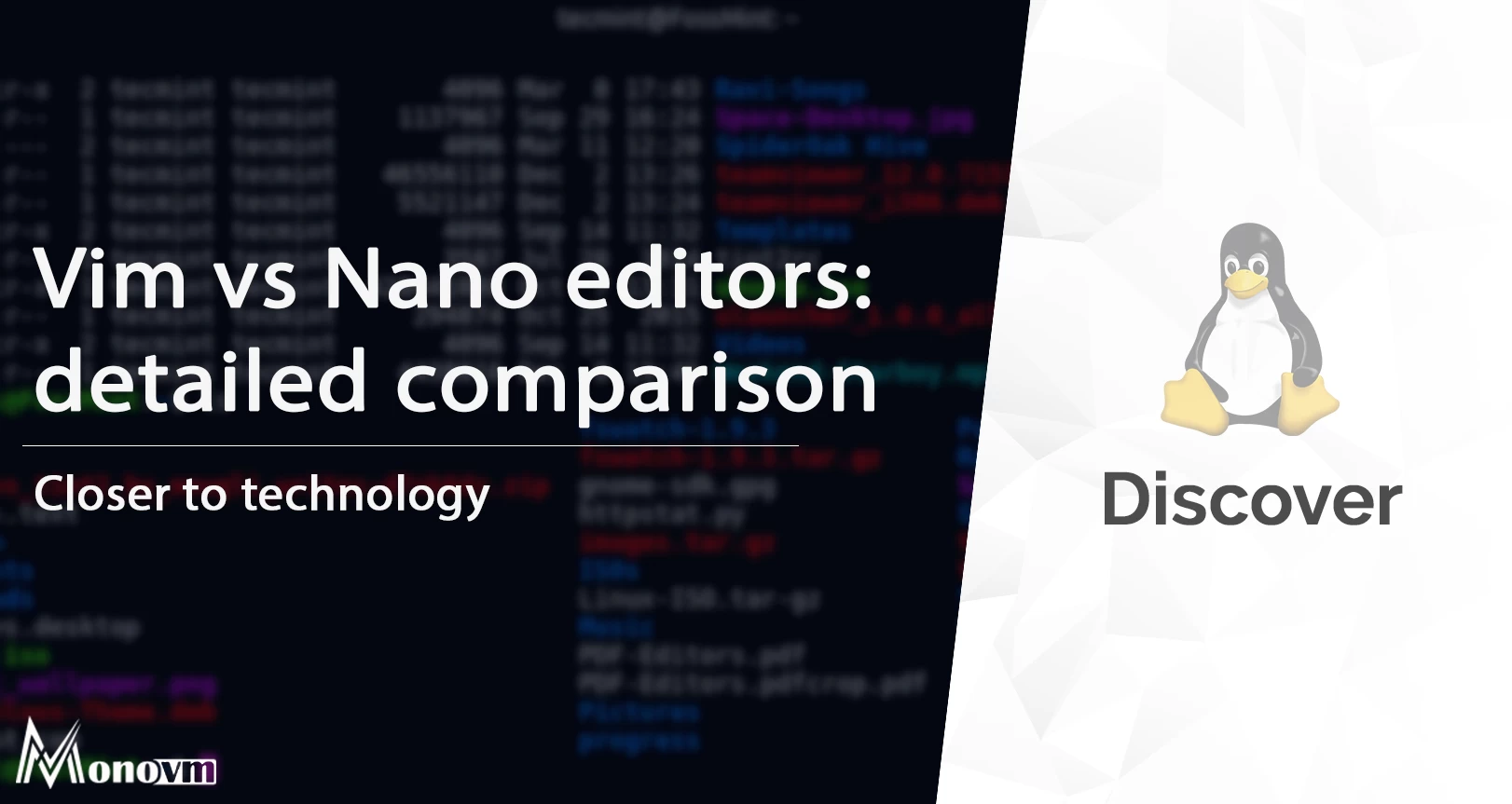List of content you will read in this article:
Both Vim and Nano are popular Linux processors, and both editors are extremely diverse in terms of how they function. Compared to Vim, Nano is easy to use and intuitive.
Vim and GNU Nano Have a Long History.
The GNU nano (also known as "nano") project was founded in 1999 to emulate and improve the Pico text editor. According to the developers, GNU nano is 2/3 to 1/8 of the Pico binary size, making it incredibly thin and usable on even the most basic computers.
Depending on the Vi text editor released in 1976, Vim is a text editor developed in 1991. Vim, like GNU nano, originated as an attempt to enhance a previous project.
Nano vs VIM Editor for Text Searching
Both editors provide the ability to search the file for text.
- Editor for nanotechnology
Use Ctrl + W to search for text in the nano editor.
- Vim as a text editor.
To search within a file with the Vim editor, you must be in command line mode. So, to begin, hit colon (:).
Type forward slash, then the word you're looking for, followed by entering to find a word.
/{word-to-be-searched} [enter]
Learning in An Effortless Manner
You might not even know how to edit a file with Vim when you first start using it. You might need to look up a cheat sheet on Google at first, but after a few hours, you'll have a good understanding of the Vim text editor.
You can also download gVim, a GUI version of VIM, to practice some popular commands. Thanks to the toolbar and menus, it will also be simple to learn how to use Vim. Then there's Nano, which is an enhanced Pico text editor with no learning curve and is more user-friendly than Vim.
Even if you've never used Nano before, you can quickly learn how to use it with only a little information and without any further assistance.
Performance
Vim acts like a model, and you'll find yourself switching back and forth between edit and command mode all the time. On the other hand, the Nano text editor has one mode with certain unique key combinations. As a result, Vim is significantly quicker than Nano.
Users
For a Linux system administrator, Vim is required. This text editor is particularly useful for programmers since it allows you to program code as a plain text file that is simple to copy and alter. Furthermore, Vim is suitable for anyone who frequently works with command-line text editors, including writers. As a result, Vim is an excellent software for all users.
If you're new to terminal-based text editing, Nano is a great text editor to start with. Nano is also beneficial for people who only need to make minor changes. Nano could be for you if you aren't an "ideal" Linux user.
To distinguish between these text editors, go through some of Vim's and Nano's key features.
Some of the wonderful features that Vim has to offer are windows support, macros; function repetition; text bodies; registries; filtering, auto-completion, and global replacement. Advanced functionalities like Screen splitting, macros, auto-completion, multiple-file viewing, rectangle selection/vertical frame, and other features aren't supported by Nano.
Vim is a more capable editor that allows you to perform complex modifications quickly and easily. Making complex changes using Nano might be more difficult and time-consuming.
Conclusion
If you need to conduct more sophisticated operations with the command line, Vim may be the best option. Vim is straightforward and appealing in its own right. As a result, it is preferable to use Vim than Nano. If you already use a nano text editor and have only recently begun to grasp some of Vim's key capabilities. When compared to Nano, you will be more efficient and effective. As a result, it's up to you to pick the text editor that best suits your needs.
People are also reading:

I'm fascinated by the IT world and how the 1's and 0's work. While I venture into the world of Technology, I try to share what I know in the simplest way with you. Not a fan of coffee, a travel addict, and a self-accredited 'master chef'.